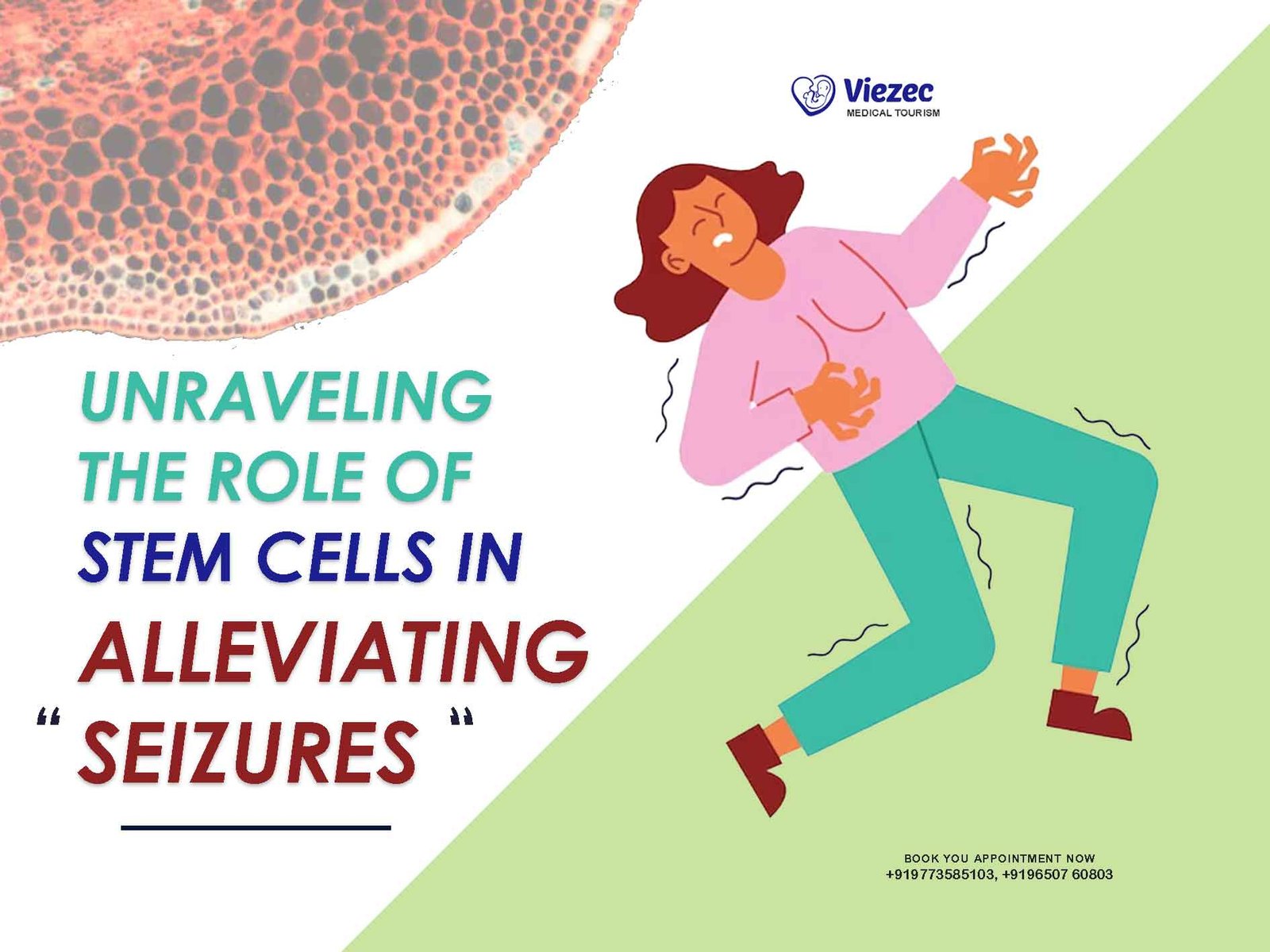Seizures, characterized by abnormal electrical activity in the brain, manifest in various forms and intensities, presenting a significant challenge to both patients and clinicians. These events can range from mild, momentary lapses in awareness to severe convulsions and loss of consciousness. The underlying causes of seizures are diverse, including genetic predispositions, brain injuries, infections, and developmental abnormalities. Despite advances in pharmacological interventions, a considerable proportion of individuals with seizure disorders experience inadequate seizure control or adverse side effects from medication.
Overview of Stem Cells
Stem cells, endowed with the remarkable capacity for self-renewal and differentiation into multiple cell types, have garnered immense interest in biomedical research. These cells exist in various tissues and stages of development, offering potential avenues for regenerative medicine, disease modeling, and drug discovery. Embryonic stem cells, induced pluripotent stem cells, and adult stem cells represent distinct categories with unique properties and applications.
Intersection of Seizures and Stem Cell Research
The convergence of seizures and stem cell research opens new avenues for understanding the pathophysiology of seizure disorders and developing innovative therapeutic strategies. Stem cells hold promise for addressing the underlying mechanisms contributing to seizure generation, as well as mitigating the neurological consequences associated with recurrent seizures.
Types of Seizures and Their Impact
Epileptic Seizures: Causes and Symptoms
Epileptic seizures, stemming from aberrant neuronal excitability and synchronization, constitute the most common form of recurrent seizures. The etiology of epilepsy encompasses a spectrum of genetic, structural, metabolic, and immunological factors. Clinical manifestations vary widely, ranging from focal seizures with limited motor involvement to generalized tonic-clonic seizures characterized by loss of consciousness and tonic-clonic convulsions.
Non-epileptic Seizures: Differentiation and Characteristics
Non-epileptic seizures, often mistaken for epileptic events due to their clinical resemblance, arise from psychological or physiological triggers rather than abnormal brain activity. These include psychogenic non-epileptic seizures (PNES) and events induced by metabolic disturbances, syncope, or psychiatric disorders. Accurate diagnosis and differentiation from epileptic seizures are crucial for implementing appropriate management strategies.
Neurological Implications of Recurrent Seizures
Recurrent seizures impose profound neurological consequences, ranging from cognitive impairments and mood disturbances to structural brain alterations and increased susceptibility to further seizures. The cumulative impact of seizures underscores the urgency for effective seizure management strategies to mitigate long-term neurological sequelae.
Stem Cell Therapy: Mechanisms and Applications
Introduction to Stem Cell Therapy
Stem cell therapy represents a promising approach for treating neurological disorders by harnessing the regenerative potential of stem cells to repair damaged tissues and modulate pathological processes. The versatility of stem cells enables their application across diverse neurological conditions, including seizure disorders, neurodegenerative diseases, and traumatic brain injuries.
Different Types of Stem Cells Used in Therapy
Various types of stem cells have been explored for therapeutic purposes, each possessing distinct properties and therapeutic potentials. Embryonic stem cells, derived from the inner cell mass of blastocysts, exhibit pluripotency and unlimited proliferative capacity. Induced pluripotent stem cells, reprogrammed from somatic cells, offer patient-specific models for disease modeling and personalized medicine. Adult stem cells, residing in tissues such as the bone marrow, brain, and adipose tissue, contribute to tissue homeostasis and repair through their regenerative capacity.
Mechanisms Underlying Stem Cell Therapy in Seizure Control
The mechanisms underlying the therapeutic efficacy of stem cells in seizure control encompass a multifaceted interplay of neuroprotective, immunomodulatory, and neuroregenerative processes. Stem cells exert their effects through various mechanisms, including paracrine signaling, trophic support, and modulation of inflammatory responses, thereby promoting neuronal survival, synaptic plasticity, and functional recovery in the epileptic brain.
Experimental Evidence: Stem Cells and Seizure Management
Animal Models: Insights into Stem Cell Efficacy
Preclinical studies utilizing animal models of epilepsy have provided valuable insights into the therapeutic potential of stem cells for seizure management. These investigations have demonstrated the ability of stem cell transplantation to attenuate seizure frequency, reduce neuronal hyperexcitability, and improve cognitive function in epileptic animals. Furthermore, mechanistic studies have elucidated the underlying cellular and molecular pathways mediating the anti-seizure effects of stem cells.
Human Trials: Promising Results and Challenges
Clinical trials evaluating the safety and efficacy of stem cell therapy in human patients with seizure disorders have yielded encouraging results, albeit with several challenges and limitations. While some studies have reported improvements in seizure control, cognitive function, and quality of life following stem cell transplantation, others have encountered issues such as variability in patient responses, graft survival, and long-term outcomes. Addressing these challenges is essential for advancing the clinical translation of stem cell-based therapies for seizure management.
Current Limitations and Future Directions in Stem Cell Research for Seizure Disorders
Despite the progress made in stem cell research for seizure disorders, several challenges and limitations remain to be addressed. These include optimizing cell delivery methods, enhancing cell survival and integration, elucidating the optimal timing and dosing of stem cell therapy, and ensuring long-term safety and efficacy. Future directions in stem cell research for seizure disorders may involve the development of novel cell-based therapies, refinement of patient selection criteria, and integration with existing treatment modalities to achieve synergistic therapeutic effects.
Potential Mechanisms of Action of Stem Cells in Seizure Control
Neuroprotection and Anti-inflammatory Effects
Stem cells exert neuroprotective effects through the secretion of neurotrophic factors, anti-inflammatory cytokines, and extracellular vesicles, which promote neuronal survival and mitigate neuroinflammation in the epileptic brain. By modulating microglial activation, astrocytic reactivity, and peripheral immune responses, stem cells contribute to the resolution of neuroinflammatory processes underlying seizure generation and propagation.
Modulation of Excitability and Synaptic Plasticity
Stem cells modulate neuronal excitability and synaptic plasticity through direct cell-cell interactions and paracrine signaling mechanisms. By promoting the formation of inhibitory synapses, enhancing GABAergic neurotransmission, and dampening aberrant neuronal firing patterns, stem cells restore the balance between excitatory and inhibitory neurotransmission in epileptic circuits, thereby reducing seizure susceptibility and severity.
Promotion of Neural Repair and Regeneration
Stem cells facilitate neural repair and regeneration through their capacity to differentiate into neuronal and glial lineages, integrate into existing neural networks, and promote endogenous neurogenesis and synaptic remodeling. By replenishing lost or dysfunctional neurons, restoring neuronal connectivity, and enhancing neuroplasticity, stem cells contribute to functional recovery and structural remodeling in the epileptic brain, thereby attenuating seizure recurrence and improving neurological outcomes.
Safety and Ethical Considerations in Stem Cell Therapy for Seizures
Risks Associated with Stem Cell Transplantation
Stem cell transplantation poses inherent risks, including tumorigenicity, immunogenicity, and ectopic tissue formation, which necessitate careful assessment and monitoring to ensure patient safety. The potential for adverse events, such as graft rejection, immune-mediated reactions, and off-target effects, underscores the importance of rigorous preclinical testing and clinical surveillance in stem cell-based therapies for seizure disorders.
Regulatory Frameworks and Guidelines
Regulatory oversight of stem cell-based therapies involves comprehensive evaluation of preclinical data, adherence to good manufacturing practices (GMP), and compliance with regulatory requirements for clinical trial conduct and product licensure. Regulatory agencies such as the Food and Drug Administration (FDA) and the European Medicines Agency (EMA) play a pivotal role in ensuring the safety, efficacy, and quality of stem cell-based products for clinical use.
Future Perspectives in Utilizing Stem Cells for Seizure Management
Overcoming Translational Barriers from Bench to Bedside
The translation of stem cell-based therapies from preclinical studies to clinical applications faces numerous challenges, including scalability, standardization, and cost-effectiveness of cell manufacturing processes, as well as regulatory hurdles, reimbursement issues, and market acceptance. Overcoming these translational barriers requires interdisciplinary collaboration, innovative technologies, and strategic partnerships to advance the development and commercialization of stem cell therapies for seizure management.
Personalized Approaches and Individual Variability
The heterogeneity of seizure disorders and patient responses to treatment underscores the need for personalized approaches to stem cell therapy, tailored to individual patient characteristics, disease etiology, and therapeutic goals. Precision medicine strategies, incorporating patient-derived cells, biomarkers, and genetic profiling, hold promise for optimizing treatment outcomes and minimizing adverse effects in patients with seizure disorders.
Integration of Stem Cell Therapy with Conventional Treatments
The integration of stem cell therapy with conventional treatments for seizure disorders, including antiepileptic drugs (AEDs), surgical interventions, and neuromodulation techniques, offers synergistic therapeutic benefits and enhances treatment efficacy. Combinatorial approaches, such as stem cell transplantation combined with AEDs or gene therapy, may potentiate neuroprotective effects, modulate drug resistance, and improve seizure control in refractory epilepsy patients.
Clinical Implications and Potential for Stem Cell-Based Therapeutics
Advantages and Disadvantages of Stem Cell Therapy
Stem cell therapy holds several advantages for seizure management, including its regenerative potential, broad applicability across diverse seizure disorders, and potential for disease modification. However, challenges such as variable treatment responses, limited long-term efficacy data, and safety concerns necessitate further investigation and optimization of stem cell-based therapeutics for clinical use.
Patient Selection Criteria and Treatment Protocols
Optimal patient selection criteria and treatment protocols are essential for maximizing the benefits of stem cell therapy while minimizing risks and adverse effects. Considerations such as disease severity, etiology, comorbidities, and patient preferences should inform treatment decisions and individualized care plans tailored to each patient’s unique clinical profile and therapeutic needs.
Long-term Outcomes and Prognostic Factors
Long-term monitoring and follow-up assessments are essential for evaluating the safety, efficacy, and durability of stem cell-based therapies for seizure management. Prognostic factors such as seizure frequency, cognitive function, quality of life, and biomarker profiles provide valuable insights into treatment response and disease progression, guiding adjustments to treatment regimens and informing prognostic counseling for patients with seizure disorders.
Role of Stem Cell Research in Advancing Understanding of Seizure Pathophysiology
Insights Gained from Stem Cell Studies
Stem cell studies have yielded invaluable insights into the pathophysiology of seizure disorders, elucidating key cellular and molecular mechanisms underlying seizure generation, propagation, and epileptogenesis. By recapitulating disease phenotypes in vitro and in vivo, stem cell models provide a platform for investigating disease mechanisms, identifying novel therapeutic targets, and testing potential interventions for seizure management.
Unraveling Complex Mechanisms Underlying Seizure Disorders
The complex interplay of genetic, environmental, and neurological factors contributing to seizure disorders poses a formidable challenge to understanding their pathophysiology and developing effective treatments. Stem cell-based approaches offer a versatile toolkit for dissecting the molecular and cellular mechanisms underlying seizure disorders, including alterations in ion channel function, synaptic transmission, neuroinflammation, and network connectivity.
Implications for Novel Therapeutic Targets and Intervention Strategies
The identification of novel therapeutic targets and intervention strategies based on insights from stem cell research holds promise for advancing the development of precision therapies for seizure disorders. Targeted modulation of aberrant signaling pathways, neuroimmune interactions, and synaptic plasticity mechanisms may offer new avenues for pharmacological interventions, gene therapies, and cell-based treatments tailored to specific seizure subtypes and patient populations.
Harnessing the Therapeutic Potential of Stem Cells for Seizure Management
Recapitulation of Key Findings and Insights
Stem cell research holds immense promise for advancing our understanding of seizure disorders and developing innovative therapies to improve seizure control and mitigate neurological sequelae. By elucidating the complex mechanisms underlying seizure pathophysiology and harnessing the regenerative potential of stem cells, we can pave the way for personalized approaches to seizure management and enhance the quality of life for individuals living with epilepsy and other seizure disorders.
Translational Research and Clinical Practice
Future directions in stem cell research for seizure management encompass the translation of preclinical findings into clinical applications, optimization of stem cell-based therapies for safety and efficacy, and integration with existing treatment modalities to achieve synergistic therapeutic effects. Collaborative efforts among researchers, clinicians, industry partners, and regulatory agencies are essential for advancing the field and realizing the full potential of stem cell-based therapeutics for seizure disorders.
Optimizing Stem Cell-Based Therapies for Improved Seizure Control
Optimizing stem cell-based therapies for seizure control requires a comprehensive understanding of disease mechanisms, patient-specific factors, and treatment response profiles. By refining cell delivery methods, enhancing cell survival and integration, and optimizing treatment protocols, we can harness the therapeutic potential of stem cells to provide safe, effective, and personalized treatments for individuals with seizure disorders, ultimately improving their quality of life and clinical outcomes.









